In the dynamic world of contemporary education, the innovative classroom design, indoors and outdoors emerges as an essential element for the success of the teaching-learning process. These are no longer just spaces where knowledge is imparted; they are places where learning, playing, creating, and exploring happen. Thus, the mere construction of four walls is no longer sufficient; we are faced with a complex and exciting challenge of seeking classrooms that not only fulfill their functional purpose but also inspire and promote interactive learning.
In this article, we will explore five fundamental keys that you should consider in the design of innovative and functional classrooms that not only foster creativity and engagement but also promote an environment of inclusive and dynamic learning.
1. Flexible Interior Design
As a primary element when designing a modern classroom, we find spatial flexibility. The ability to adapt the environment to various teaching and learning modalities is crucial. This is achieved by introducing modular and multifunctional furniture, thus allowing for quick reconfiguration of the space according to the needs of the moment. From lectures to group or individual activities, flexibility fosters collaboration and interaction among students, creating a dynamic environment that adapts to the flow of knowledge.

¿Would you like to know how we at cr+a design flexible spaces that allow for adapting the flow of learning in young people and children?
Visit our project Olinca Multipurpose Space
2. Collaboration Spaces
In an increasingly interconnected world, social skills and teamwork become essential in modern education. From interior design, spaces are developed to promote collaboration and the exchange of ideas among students. These spaces include strategically located meeting and rest areas, allowing every corner of the classroom to become a catalyst for the development of social bonds, creating a sense of community that transcends the boundaries of traditional learning.
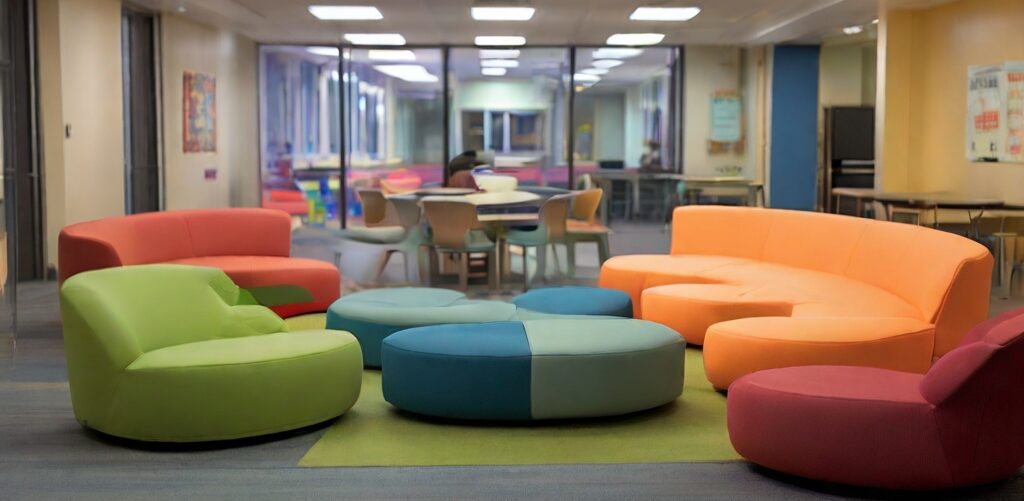
¿Would you like to know how we at cr+a design collaboration spaces that foster social relationships among students?
Visit our project Book House St.Matthew
3. Commitment to Environmental Sustainability
The responsibility towards our planet is a value that should permeate all spheres of society, including education. This is why various strategies are implemented from the field of architecture; From the integration of eco-friendly elements to the optimization of energy resources, every design decision can contribute to the construction of a healthier and more environmentally friendly environment. By opting for natural lighting, cross ventilation, and the use of recycled materials, we not only reduce environmental impact but also lay the foundation for conscious and responsible learning within the classroom.
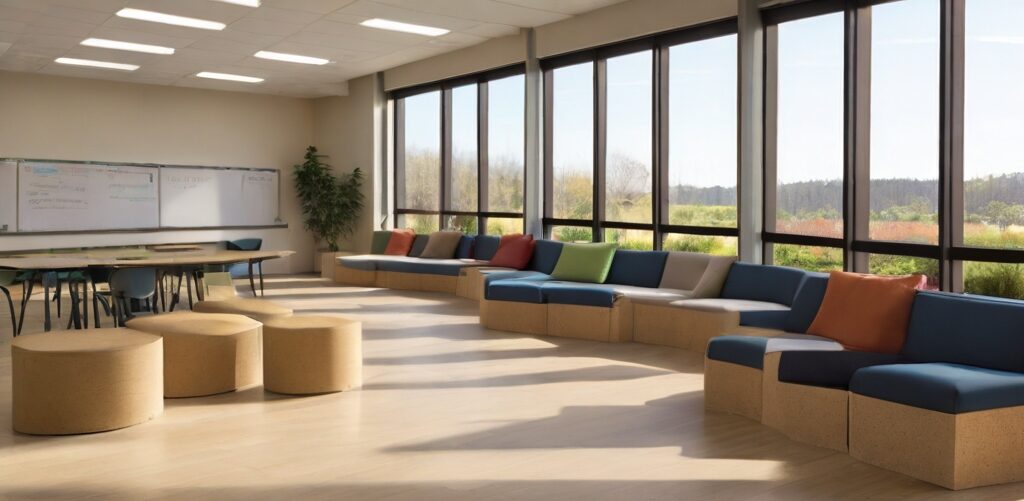
¿Would you like to know how we at cr+a design spaces committed to environmental sustainability?
Visit our project Newport School
4. Sensory Experiences
In the learning process, the senses and perceptions act as guides, awakening curiosity and exploration. From interior design, vibrant colors, tactile textures, and natural elements are introduced to invite contemplation and experimentation. From vegetation that encourages exploration and discovery to the murmur of water that soothes the senses, every detail of the design becomes a tool to stimulate attention and concentration, creating a conducive space for reflection and sensory awakening in the classroom.
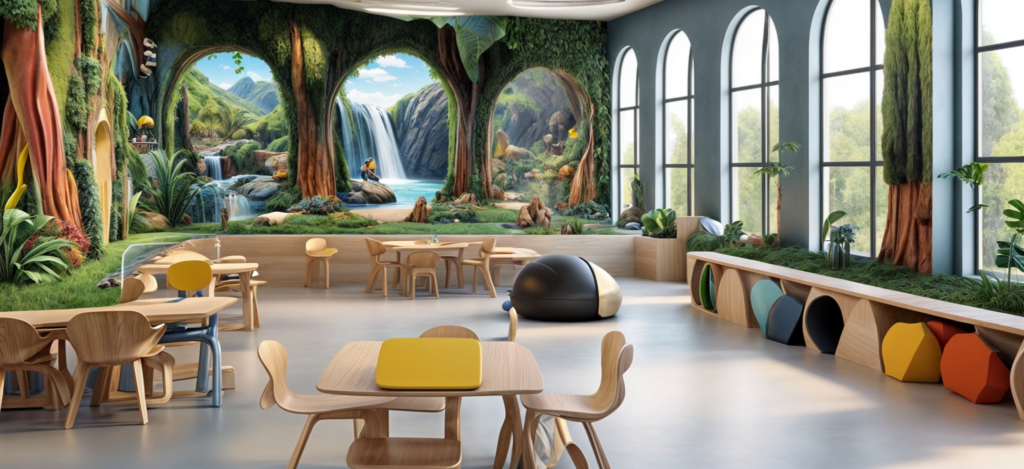
¿Would you like to know how we at cr+a design spaces that prioritize sensory experiences?
We invite you to read our article: CREA Newman School: Reinventing the School Library
5. Architecture, Education, and Technology
In an increasingly digitized world, the integration of technology in the classroom becomes inevitable. Therefore, when designing, it is appropriate to include technological elements that actively support the development of the class. From interactive whiteboards to online learning management systems, technology offers a wide range of tools that can enhance teaching and personalized learning. It is crucial that the classroom design facilitates the integration of these resources in an intuitive and accessible way for all students, thus preparing them for the challenges of the digital future.
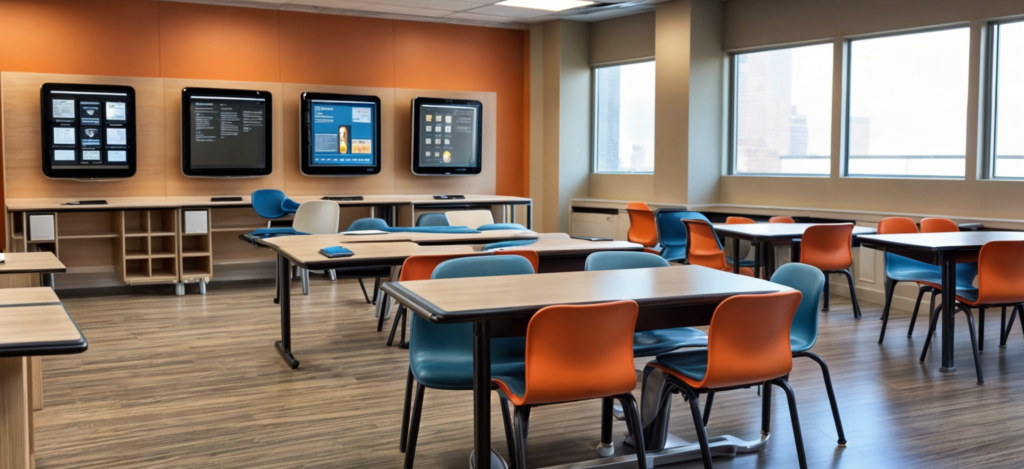
¿Would you like to know how we at cr+a design spaces that incorporate all the technological benefits of the 21st century?
Visit our project Olinca Preschool Periférico
Conclusion
The design of innovative and functional classrooms transcends the simple dimensions of a physical space. It is the foundation upon which the future of learning is built, a space where creativity, collaboration, and technology converge to inspire and empower the minds of tomorrow. By prioritizing spatial flexibility, collaboration, environmental sustainability, sensory stimulation, and technology integration, we embrace the opportunity to create educational environments that not only prepare students for the world they will face but also invite them to imagine and build a better future for all.
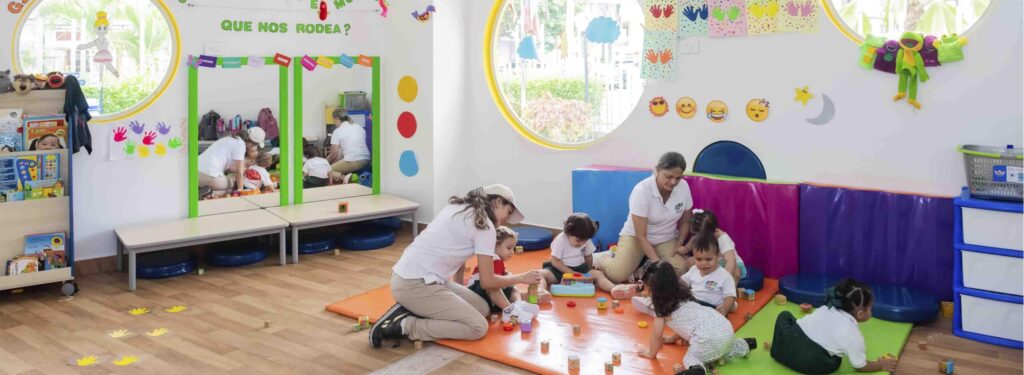
In this journey towards educational transformation, every step counts. It is imperative that we continue to explore new ideas, adapt approaches, and share experiences to keep moving forward towards a future where learning is truly inspiring and accessible for all. Therefore, we encourage educators, architects, and all those interested in the design of educational spaces to join this mission of continuous innovation. Together, we can make a significant impact on how teaching and learning are done. Together, we can build a brighter and more equitable future of learning for future generations.
¿Would you like to learn more about the innovative classroom design for your institution?
Contact the cr+a team for expert advice.


